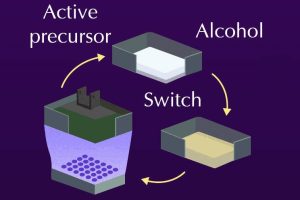CEA, the French National Centre For Scientific Research (CNRS) and CEO Maud Vinet have founded a startup called Siquance which aims to develop and commercialise a quantum computer built on microelectronics technology. Siquance is developing a quantum computer that is based on standard silicon ICs. To enable this, a disruptive technology solution was essential to transform a classical transistor so ...
Research
The latest electronics research news from within the industry and universities from around the world.
Square Kilometre Array radio telescope gets an official launch
The Square Kilometre Array radio telescope got its next official launch this week, when director-general Philip Diamond travelled to the site where SKA-Low (below) will be built in Western Australia and council chair Catherine Cesarsky went to the SKA-Mid (right) site in South Africa’s Northern Cape. “The SKA project has been many years in the making,” said Cesarsky. “Today, we ...
Near-field microwave holograms predict far-field future for telescope
Near-field microwave holography has been used to characterise receiver optics at temperatures close to absolute zero before they are installed in the Simons Observatory Large Aperture Telescope in Northern Chile, which will measure cosmic microwave background. The near-field results were used to predict far-field performance of the assembly, which includes lenses, filters, a feed horn and baffles. “We developed a ...
Measuring the behaviour of electrons injected into quantum dots
Measuring the behavior of electrons injected into quantum dots promises insights into how electrons behave in complex real-world materials and could help researchers engineer devices that make possible quantum computers, say scientists from the US National Institute of Science and Technology (NIST). The researchers made multiple 3-by-3 grids of precisely spaced quantum dots, each comprising one to three phosphorus atoms. ...
Combined power and signal transmission simplifies receive end
Korea Maritime and Ocean University scientists have developed a scheme for combined power and data transmission that cuts power consumption at the receiver end. Such combined transmissions, sometimes called ‘swipt’ for ‘simultaneous wireless information and power transfer’, are proposed to interface one powered fixed point with multiple wireless IoT sensor nodes that no longer need local power sources. Pulse position ...
3d printing puts metal conductors anywhere on plastic parts
Researchers from Japan and Singapore have developed a 3D printing technique to create conductive metal patterns on the external and internal surfaces of 3D plastic structures. It does not print solid metal directly, but instead accurately positions a catalyst throughout a polymer object wherever surface metal will later be needed. Update: Harting is commercially offering a similar process using injection ...
Electrostatic actuators improved by self-polarising ferroelectrics
Electrostatic actuators that work at lower voltages could come out of research at the Tokyo Institute of Technology. These devices consist of two oppositely charged electrodes that generate a force when there is an electric field between them. “By altering the shape of their electrodes and filling the gap between them with flexible, soft materials, various configurations for electrostatic actuators ...
‘Paper’ supercaps reach 10F
Researchers at Sweden’s Digital Cellulose Center have improved their paper supercapacitor technology, getting 10F from a demonstration device. The active ingredient of the capacitor is a water-based ink made from the conductive polymer PEDOT:PSS and cellulose pulp derived from softwood, plus some other ingredients including activated carbon. Previously, the Center screen-printed this onto an aluminium-coated plastic substrate, but in this ...
How to modulate daylight to transmit data
Researchers in Saudi Arabia are exploring an unusual idea: modulating daylight coming through a window to transmit data. The scheme will use quadrature amplitude modulator and a pair of liquid crystal shutters to change the polarisation of light as it passes. “Change in light polarisation is imperceptible to the eye, eliminating the flicker problem,” said researcher Sahar Ammar (pictured) of ...
A stable anode for sodium-ion batteries?
Sodium-ion batteries could be a lower-cost alternative to Li-ion batteries, if ways are found to prevent the large sodium ions destroying their electrodes as they shuttle back and forth. As a possible sodium-ion anode for such batteries, materials scientists at Qingdao University have used titanium dioxide and graphite to produce a stable structure, unchanged after 2,000 cycles. “The researchers found ...
 Electronics Weekly Electronics Design & Components Tech News
Electronics Weekly Electronics Design & Components Tech News
